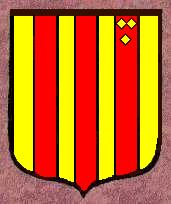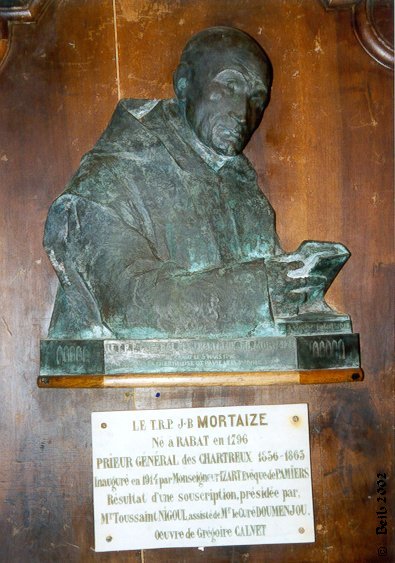Toussaint NIGOUL
CORBEYRAN 1st of Foix-Rabat:
He is born in 1321 and dies in 1402 in the castle of Rabat having made out a will there on October 10th, 1402. His first name results from Corbeyre of the name of the brook which crosses the valley of the same name.
He was the tutor, the councillor, the administrator then Gaston Fébus's seneschal from 1364 till 1387.
"Gaston Fébus found in Corbeyran a brake in his déchainements and a councillor of an acuteness and a wisdom of sights such as we could compare this one with Talleyrand. Corbeyran was Talleyrand des Pyrénées, loyal and firm as a cliff, but incorruptible and selfless Talleyrand. He will follow him everywhere to protect him. He was the big moderator of the tempestuous spirit of Gaston Fébus. If Gaston Fébus had followed his advices, he would have managed to make of him the sovereign of a whole Southern realm going from the Atlantic Ocean to the Mediterranean Sea and Pyrenees in the Garonne.."
Appreciation of the Prince of béarn
"" The brave, the brave man " was nicknamed because of its warlike exploits among others against the Saracens by 1400 together with Gaston We say that before leaving for his expeditions, he confided his own lands and those of his suzerain the count of Foix to his lieutenants, and that he launched, in his name and in that of the Gaston II, this challenge to those who would have tried to seize it Tocos-i Gausos , slogan which was adopted by the counts of Foix and which is at present the slogan of the city of Foix. .
Afterward he went to fight in Prussia, together with Gaston Fébus, and this one seems to have confided him the command of his troops. "
Adelin Moulis, if the counts of Foix were told to me...
"Mossen Corbayran de Foixs" August 31st, 1398, in the church Saint-Volusien of Foix, Archambaud de Grailly and Isabelle, count and countess of Foix honoured,. Then March 16th, 1401, in the chamber of state of the abbey of Foix: honoring returned to Archambaud and to Isabelle, count and countess of Foix, by "lo noble mossen Corbayran de Foix, cavaler, per lo loc e castel de Fornets, lo loc e castel de Rabat, lo loc e castel de Montfa, la mieytat del loc de la Bastida de Besplas, lo loc de Lobaut [ Fornex, Montfa, the Country house of Sérou, Loubaut are communes of the district of Pamiers and canton of the Farmhouse of Azil ], e totes autres que ha e a luy aperthienin en lo comtat de Foix ".
He married in 1370, Mengarde de Villars and had five children..
In its will drafted in Latin, Corbeyran asked to be buried in the church of Rabat " in the feet of the grave of his father " and settle the detail of its burial.
"He is represented on horseback, dressed in his war dress, on a big iron gate, to the entrance of the castle of Fornets in the form of medal, around which we read a registration:: Corbeyrandus de Fuxo, dominus de Ravato, de Fornellis MCCCXCI And of other one quoted by the gate, we see the weapons of the house of Foix. Of gold in three pales of mouths, the last one on the right angle of the ecu is broken by 3 rhombuses, crest a wolf. "
The Anselme Father, in l'Histoire Généalogique et Chronologique
de la maison royale de France des Pairs, grands officiers de la Couronne
et de la Maison du Roy et des anciens Barons du Royaume
Volume III, MDCCXXVIII

According to Etienne Carbonne, the blazon of Corbeyran which is to Fornets has knight's helmet for crest; It would be interesting to know to which quoted the head is turned because turned to the left, it would indicate a batardise and would accredit the thesis on Loup, but until which degree of relationship we can go back up?
Jean-Baptist MORTAIZE:
He was born 05 Mars 1796 in Rabat. Entered the Big Chartreuse in 1836, he became the prior of the Big Convent and the superior general of the Order. Called by old "lé Sant dé Rabat". He died in the chartreuse of Pavie in 1871.. On the initiative of Toussaint NIGOUL, a bust to his memory was placed in 1914 in the church saint-Marie in Rabat, bust which the sculptor Grégoire CALVET made, representing him "Ascetic figure with the skull surrounded with a slender crown of hair". (G.Calvet was also the sculptor of the war memorial)
